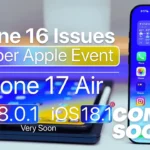Method 1
STOP Ransomware is a type of malware that encrypts the files on a victim’s Windows computer and demands payment in exchange for the decryption key. If you believe your computer has been infected with STOP Ransomware, here are some steps you can take:
1. Disconnect your computer from the internet and any other devices to prevent the malware from spreading to other systems.
2. Run a malware scan using an up-to-date antivirus program. If the antivirus software detects the STOP Ransomware, follow its instructions for removing the malware.
3. If your files have already been encrypted, do not pay the ransom. There is no guarantee that the attackers will provide you with the decryption key even if you pay, and it only encourages them to continue their criminal activities.
4. If you have backups of your important files, restore them from your backup. This is the best way to recover your files without paying the ransom.
5. If you do not have backups, there may be some decryption tools available online that can help you recover your files. However, be cautious when downloading tools from the internet, as some may contain malware.
6. To prevent future infections, ensure that your Windows operating system and all software are up-to-date with the latest security patches, and be cautious when opening email attachments or downloading files from the internet. Additionally, consider using a reputable antivirus program and regularly backing up your important files.
Method 2
STOP Ransomware is a type of malware that targets Windows computers, encrypts the victim’s files, and demands payment in exchange for the decryption key. It is a serious threat to the security and privacy of users, and it’s important to take immediate action if you believe your computer has been infected.
Here are some detailed steps you can take to address a potential STOP Ransomware infection and protect your computer from future attacks:
1. Disconnect from the internet: The first step in dealing with a ransomware infection is to disconnect your computer from the internet and any other devices. This will prevent the malware from spreading to other computers or devices on your network. It will also prevent the attackers from communicating with the infected computer and potentially stealing sensitive information.
2. Scan your computer for malware: Use a reputable antivirus software to scan your computer for malware. If the antivirus software detects STOP Ransomware or any other malware, follow the instructions provided by the software to remove it. Make sure your antivirus software is up-to-date, as new threats are constantly emerging.
3. Do not pay the ransom: It is important to never pay the ransom demanded by the attackers. There is no guarantee that paying the ransom will result in the decryption of your files. In fact, paying the ransom only encourages attackers to continue their criminal activities. Furthermore, there are other ways to recover your data without paying the ransom.
4. Restore from backups: If you have backups of your important files, restore them from your backup. This is the best way to recover your files without paying the ransom. Make sure your backups are up-to-date and stored in a safe location, such as an external hard drive or cloud storage.
5. Use decryption tools: There may be some decryption tools available online that can help you recover your files without paying the ransom. However, be cautious when downloading tools from the internet, as some may contain malware. Only download tools from reputable sources.
6. Update your system and software: Keep your Windows operating system and all software up-to-date with the latest security patches. This will help prevent future infections by closing vulnerabilities that ransomware and other malware can exploit. Additionally, use a reputable antivirus program and regularly back up your important files.
7. Be cautious with email and downloads: Be cautious when opening email attachments or downloading files from the internet. Only download files from reputable sources, and avoid opening attachments from unknown senders.
In summary, STOP Ransomware is a serious threat to the security and privacy of Windows computer users. If you believe your computer has been infected, take immediate action by disconnecting from the internet, scanning for malware, and following the steps outlined above. By staying vigilant and taking proactive measures to protect your computer, you can reduce your risk of falling victim to ransomware and other malware attacks.
End this problem…..
STOP Ransomware, Windows, malware, encryption, decryption, antivirus, backups, data protection, cyber security, internet security, malware removal.







